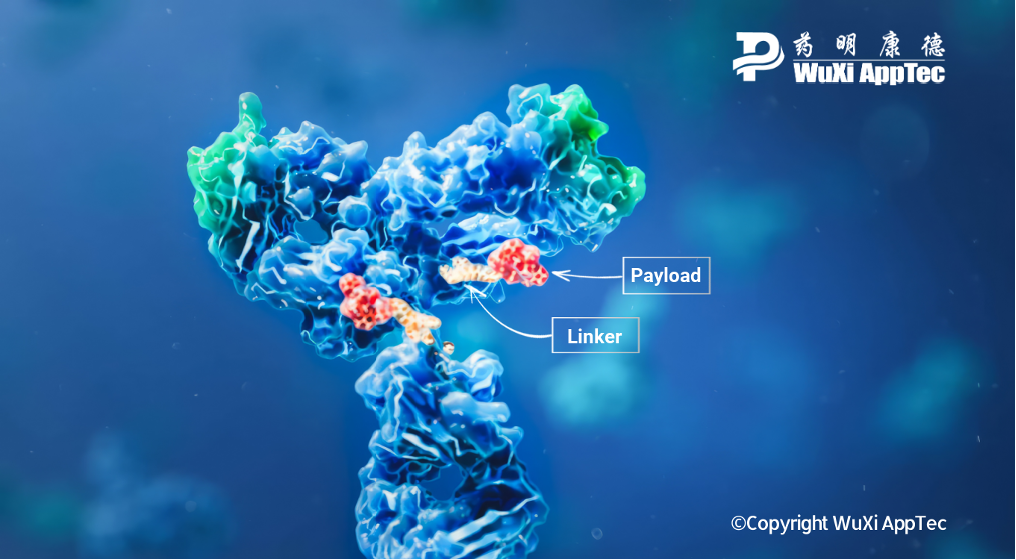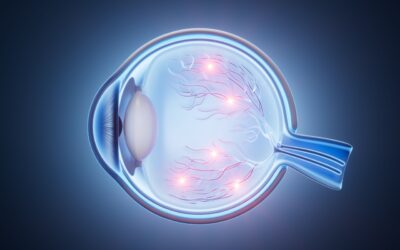Drug developers and sponsors have continually sought innovative approaches in their quest for more effective and less harmful cancer therapies. Traditional treatments, while capable of targeting tumors, often come with significant side effects and diminished effectiveness in advanced stages of cancer. This ongoing challenge has propelled the exploration of alternative strategies, among which antibody-drug conjugates (ADCs) have emerged as a notable advancement. ADCs uniquely combine targeted delivery to cancer cells by releasing powerful cytotoxic agents, thereby minimizing harm to healthy tissue.
How do linkers work?
ADCs are sophisticated molecular structures composed of three essential components. The first is the antibody, which accurately identifies and directs the molecule to the cancerous cells. The second element is cytotoxin, a potent agent responsible for eradicating cancer cells. The third and perhaps most critical component is the linker, a specialized segment that activates the cytotoxin once the antibody has bound to the tumor. The effectiveness and safety of an ADC depend significantly on the design of this linker, underscoring its crucial role in the overall function of the drug.
Understanding the delicate balance in the design of these linkers is vital, as it directly impacts the ADC’s utility. The linker must be stable enough to prevent premature payload release, which could damage healthy tissue. However, if the linker is too stable, it may not cleave effectively at the tumor site, diminishing the ADC’s efficacy.
Several innovative solutions are being explored to address these challenges. One approach involves optimizing the chemical triggers within the linkers. By refining these triggers, scientists may have more control over the payload release, reducing unintended toxicity on healthy cells while enhancing the treatment’s effectiveness. Another promising avenue is the development of novel linker-antibody attachments. These attachments are designed to produce ADCs that are more stable and homogeneous, which could improve their circulation within the body, as well as their overall efficacy and safety profiles.
Enhancing ADCs’ pharmacokinetic (PK) profile is also a key focus. By improving this aspect, ADCs may more effectively reach and accumulate at the tumor site before initiating cleavage, thereby increasing the drug’s efficiency in targeting cancer cells. Also, developing non-internalizing ADCs marks a significant advancement in this field. Unlike traditional ADCs that require complete internalization into a cell before payload release, these versions are designed to release their cytotoxic agents upon merely reaching the tumor microenvironment. This external release mechanism can potentially kill cancer cells more efficiently, thus broadening ADCs’ scope and effectiveness in cancer treatment.
Aspects of linker design
Linker design plays a pivotal role in ADC development. This task is both a scientific endeavor and an art form, requiring a customized approach for each ADC to align with its specific antibody, cytotoxic payload, and targeted tumor environment. Each of the below aspects contributes to the ADC’s efficacy:
- Conjugation site: The point where the linker attaches to the antibody is critical for the stability of the ADC. This conjugation site must ensure the linker and payload are firmly bound together to avoid premature detachment and subsequent release of the cytotoxin. A secure attachment at this site is vital to prevent the payload from being released into healthy tissue.
- Hydrophilicity: A linker with low hydrophilicity may cause the ADC to accumulate in unintended tissues, leading to off-target toxicity. Thus, achieving the right balance in hydrophilicity is crucial to ensure that the drug remains in circulation long enough to reach the tumor site without causing damage to healthy cells.
- Linker length: A shorter linker can offer greater stability by shielding the payload within the antibody’s structure, reducing its exposure to enzymatic degradation, and extending its half-life in circulation. However, an overly short linker might hinder the effective release of the payload at the tumor site.
- Steric hindrance: This involves structural elements that can block or hinder chemical reactions, in this case, the access to the payload-linker bond. By introducing steric hindrance, the linker gains stability, protecting the bond from premature cleavage. However, too much hindrance can impede the payload’s release at the crucial moment.
Each of these aspects requires meticulous consideration and balancing to design a linker that complements the antibody and cytotoxic payload while also being responsive to the specific environment of the target tumor cell.
ADC linker types
Developing various types of linkers is pivotal in ADC development. Linkers are designed by fine-tuning different elements, and each has unique strengths and weaknesses:
- Acid-cleavable linkers are designed to undergo hydrolysis in the acidic environment within cancer cells. However, their instability in plasma and relatively short half-life makes them more prone to trigger the cytotoxin prematurely, potentially endangering healthy cells. As a result, acid-cleavable linkers are typically paired with milder cytotoxic payloads to mitigate the risk of early activation.
- GSH-cleavable linkers leverage the higher concentrations of glutathione (GSH) in cancer cells. These linkers maintain stability in the bloodstream, reducing the likelihood of premature activation. Yet, their effectiveness can be influenced by α-substituents, which can cause variations in payload release at the tumor site, potentially affecting the ADC’s overall effectiveness.
- Enzyme-cleavable linkers are designed to be cleaved by enzymes overexpressed in cancer cells and offer more stability than GSH-cleavable and acid-cleavable variants. Their ability to distinguish effectively between the plasma and target cells enhances the precision and efficacy of payload delivery.
- Novel cleavable linkers are engineered to selectively cleave in cancer cells while bypassing normal cells, thereby minimizing damage to non-targeted tissues. They represent a significant advancement in linker technology, offering more targeted and safer treatment options.
- Non-cleavable linkers are the most stable of all the variants and do not break down in or around tumor cells. Instead, they release their payload only after the cancer cell fully internalizes the ADC. Their stability reduces the risk of off-target effects but also requires specific conditions for payload delivery.
These various linker types allow scientists to tweak and tailor ADCs more precisely to the needs of different cancer therapies, enhancing the drug’s safety and efficacy.
A final word
As scientists’ understanding of linker technology deepens, their capacity to tailor and expand them in various therapeutic scenarios also advances. Continuous research and development in linker design, including exploring novel linker types, brings the field closer to realizing the ideal in cancer treatment. This progress is exciting for drug developers and sponsors but, more importantly, offers hope for patients seeking effective cancer therapies. For drug developers and sponsors who lack the capacity or capability internally, realizing this potential will require action and collaboration with skilled laboratory partners.
As a global company with operations across Asia, Europe, and North America, WuXi AppTec provides a broad portfolio of R&D and manufacturing services that enable the global pharmaceutical and life sciences industry to advance discoveries and deliver groundbreaking treatments to patients. Through its unique business models, WuXi AppTec’s integrated, end-to-end services include chemistry drug CRDMO (Contract Research, Development and Manufacturing Organization), biology discovery, preclinical testing and clinical research services, helping customers improve the productivity of advancing healthcare products through cost-effective and efficient solutions. WuXi AppTec received an AA ESG rating from MSCI for the fourth consecutive year in 2024 and its open-access platform is enabling around 6,000 customers from over 30 countries to improve the health of those in need – and to realize the vision that “every drug can be made and every disease can be treated.”


